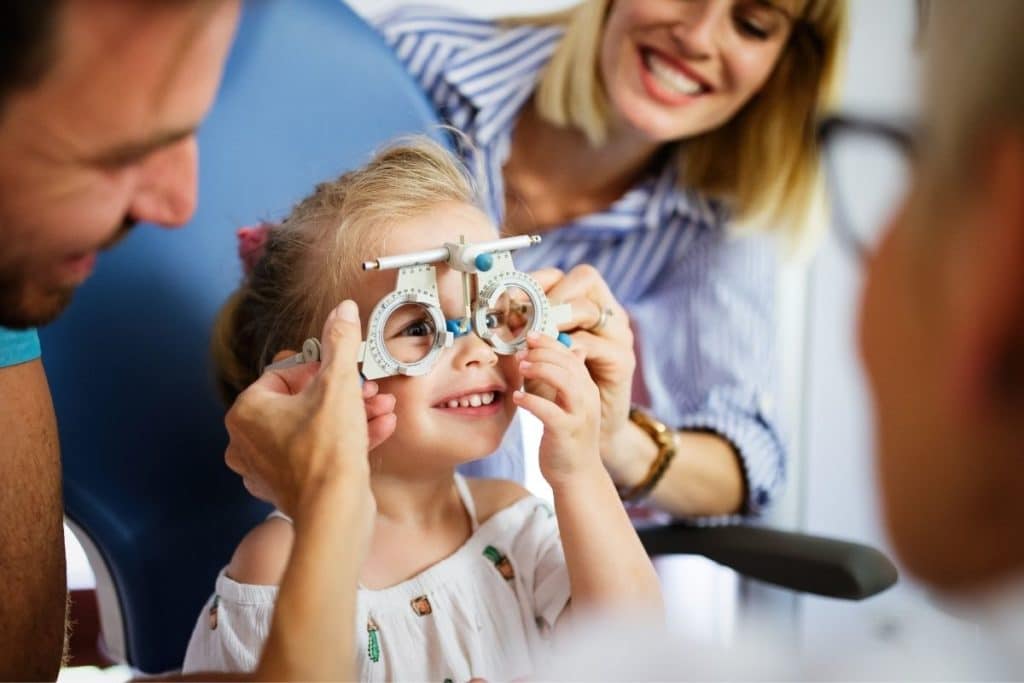It’s common for parents to hear stories from family members, friends, or online forums claiming that kids naturally outgrow vision problems without intervention. But how accurate is this belief? Can kids genuinely outgrow vision problems, or is this a myth?
Understanding Vision Issues in Children
Children can experience a range of pediatric eye conditions, including nearsightedness (myopia), farsightedness (hyperopia), astigmatism, and lazy eye (amblyopia). Each condition impacts visual development differently.
Nearsightedness (Myopia)
Myopia makes distant objects blurry. It often appears in school-age children, affecting their academic and outdoor activities. Nearsightedness usually worsens over time without intervention and requires corrective lenses.
Farsightedness (Hyperopia)
Hyperopia causes difficulty seeing close-up objects, leading to eye strain or headaches. While mild hyperopia can sometimes improve as a child’s eyes mature, moderate to severe cases typically need corrective measures.
Astigmatism
Astigmatism causes distorted vision at any distance due to irregularly shaped corneas or lenses. Astigmatism does not correct itself; treatment is essential to prevent academic or daily life disruptions.
Lazy Eye (Amblyopia)
Amblyopia involves reduced vision in one eye due to improper visual development. Without treatment, amblyopia can cause permanent vision loss. Early treatments like eye patches or glasses are crucial.
Myths About Kids Outgrowing Vision Problems
Several misconceptions influence parents’ decisions regarding pediatric eye care.
Myth: Kids Naturally Outgrow Vision Problems
The idea that kids naturally outgrow vision problems is mostly false. While slight improvements in mild farsightedness may occur, myopia, astigmatism, and amblyopia typically persist without professional care.
Myth: Glasses Make Vision Worse
Some parents mistakenly think glasses weaken the eyes. In reality, glasses support proper visual development, preventing eye strain and worsening vision.
Myth: Vision Problems Are Obvious
Parents often assume they’ll easily spot their child’s vision issues. However, many conditions go unnoticed without routine professional screenings. Regular eye exams are crucial for early detection.
Facts About Children’s Vision Health
Early Detection Is Vital
Regular eye exams significantly influence a child’s visual health. Early identification of vision issues leads to timely treatments, ensuring better academic performance and overall quality of life.
Intervention Improves Outcomes
Studies consistently show that early intervention enhances vision outcomes, especially for amblyopia, which responds best to treatment before age seven.
Preventative Care Is Beneficial
While not all common vision problems can be prevented, limiting screen time, encouraging outdoor play, and regular eye exams can support better vision health and slow conditions like myopia progression.
The Bottom Line: Do Kids Outgrow Vision Problems?

The straightforward answer is usually no—children typically don’t outgrow vision problems without proper intervention. Relying on myths rather than professional medical advice could result in lasting vision impairment. Routine screenings and timely interventions are crucial. Parents should proactively approach their child’s vision care, recognizing that most vision problems need expert evaluation and treatment for effective ocular management.
For more information or to schedule an appointment, contact Art of Optiks today.

